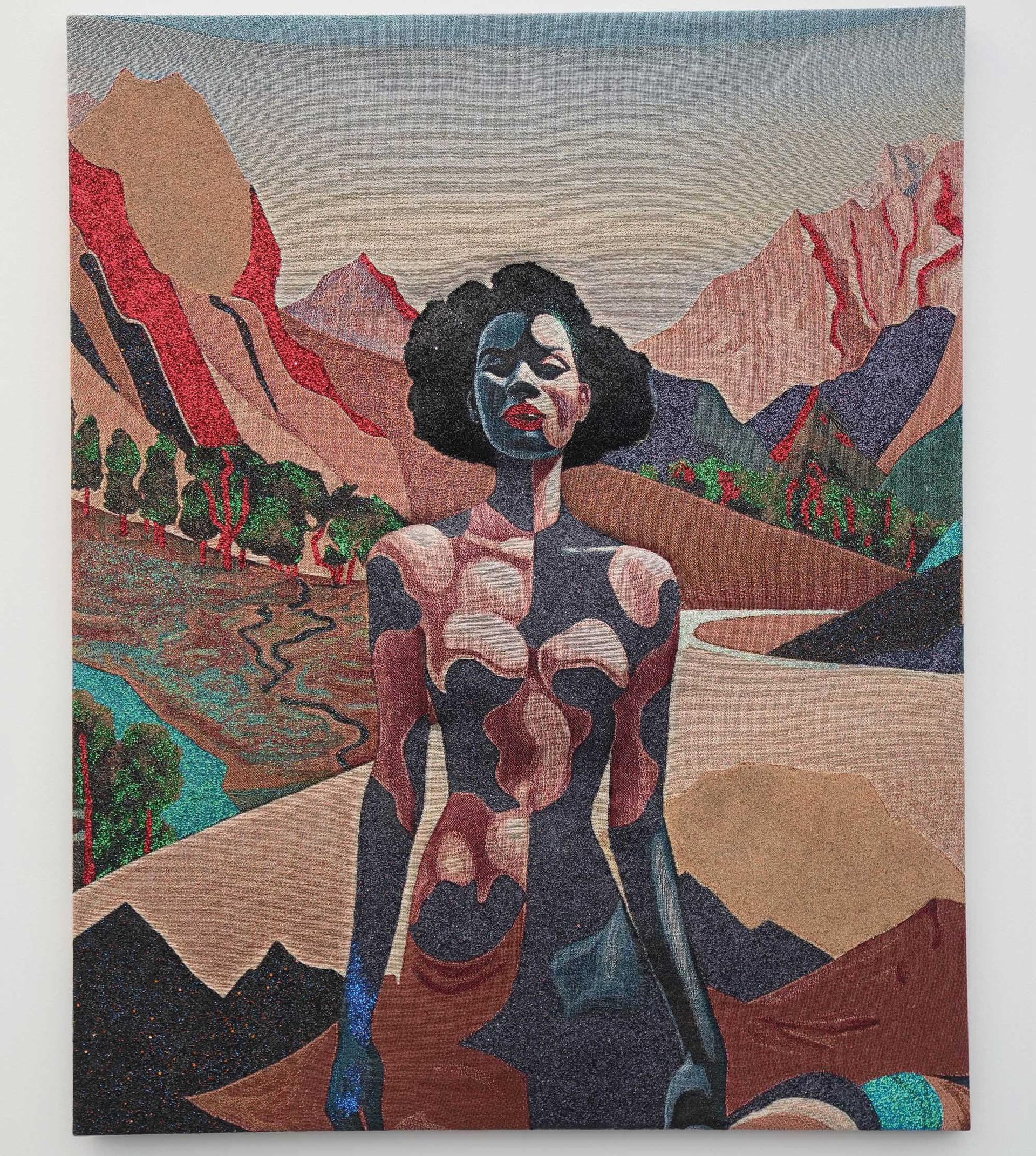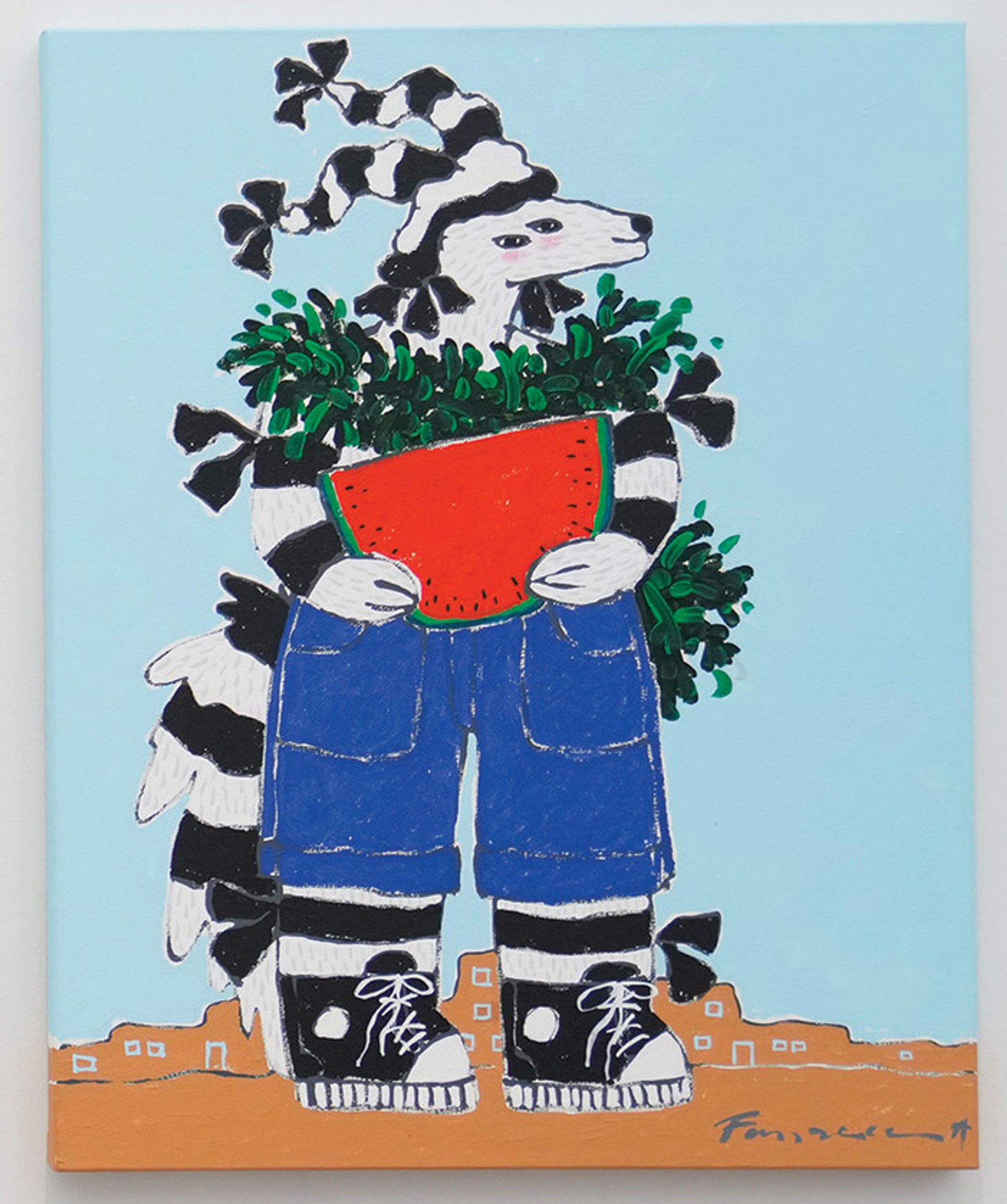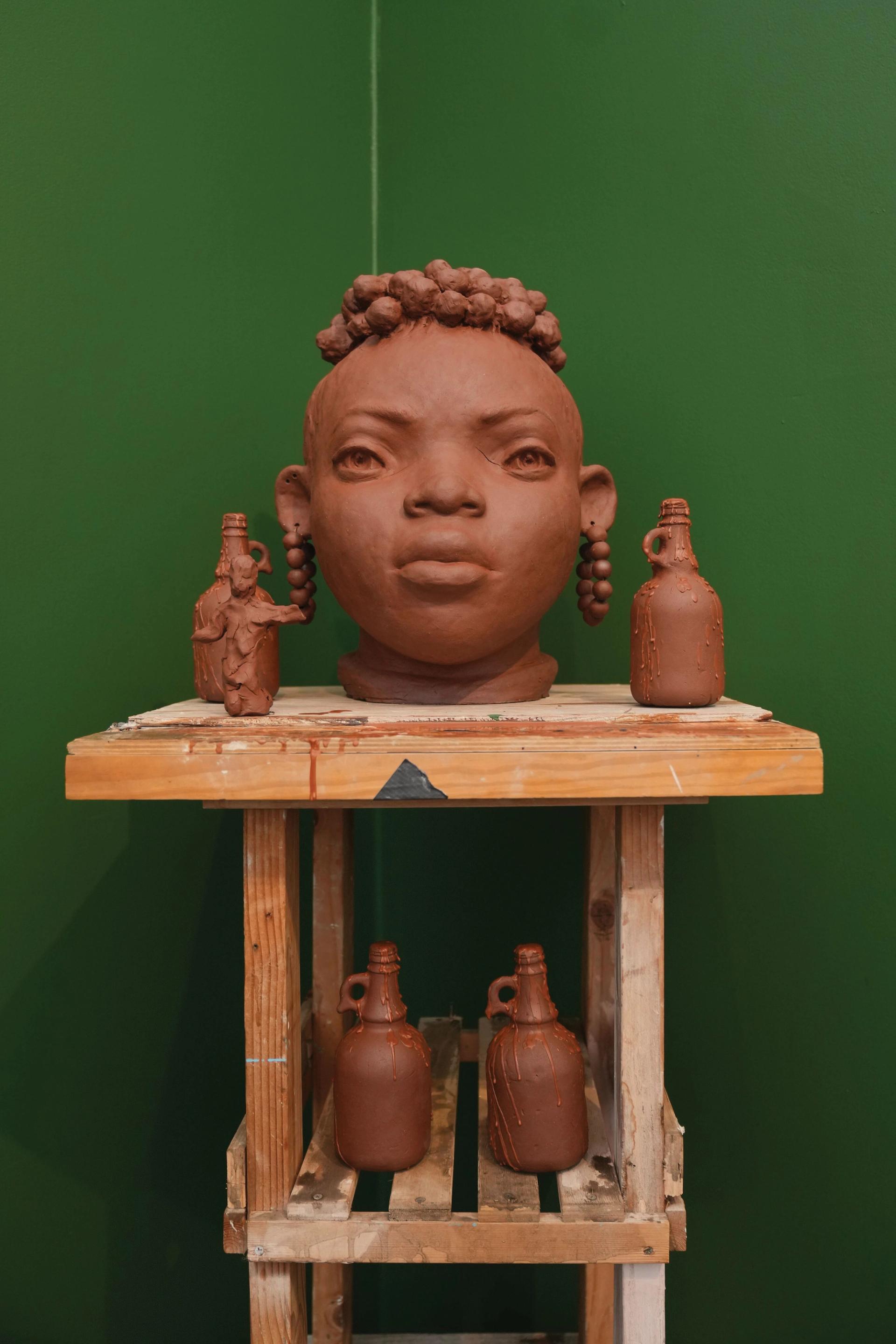Essence Harden, an artist, curator, and writer, is deeply rooted in the art scene in Los Angeles, where she lives and works as curator of visual arts at the California African American Museum. After taking on that role, he said he hoped to “highlight the work of collectors and collectives, and cultivate scholarship, on black visual culture and the West.” This year, Harden is the curator of the Focus section at Frieze Los Angeles, which brings together 12 galleries that have all opened in the last dozen years. Most of the artists in the section, organized around the theme of “ecology”, are represented by Californian galleries, and all of them make work with which Harden claims to have a “deep relationship”. Harden walked us through some of his highlights in the section.
Muzae Sesay, Source of Kamara (2024), Diamond Dock (2024)
pt.2 Gallery (in the image at the top of the page)
Muzae Sesay, who was born in Long Beach and now lives in Oakland, presents a series of paintings that reference her Sierra Leonean heritage. Its warm tones and idealized architectural forms create a dreamlike vision of an “uncolonized Sierra Leone,” says Harden, and a sense of “equitable space,” adding, “I love its color palette and the way it draws out the geography.” .
Widline Cadet, For great love (2023), Nazarian / Curcio

Widline Cadet, For great love (2023), Father Nazarian / Curcio Eric Thayer
Photographer Widline Cadet, born in Haiti and based in Los Angeles, presents a series of works that reinterpret her family’s archive. In this image, she represents her mother’s wedding dress – to whom she was wearing it – highlighting a feeling of “protection and care” in the viewer’s gaze. “The way that Los Angeles gets mixed up with Haiti in this work is really interesting when you think about the diaspora,” Harden says. “We didn’t really think about the two places being connected, but here, Los Angeles looks like home and feels like home.”
Akea Brionne, Valley of Dreams (2024), Lyles and King

Akea Brionne, Valley of Dreams (2024), in Lyles & King Eric Thayer
To create her vibrant images, Akea Brionne feeds photographs from her family archive into a private server, adding AI cues to create new scenes that “reinvent the historical language around figuration and Blackness,” says Harden. The images refer to the historical movement of black communities between Louisiana and California, with the deserts of Arizona and New Mexico, yet retain a surreal and futuristic edge.
Harry Fonseca, Coyote Koshare with Melon (1994), Babst Gallery

Harry Fonseca, Coyote Koshare with Melon (1994), at Babst Gallery Eric Thayer
Native American painter Harry Fonseca, who died nearly 20 years ago, used the coyote as a “flexible queer” motif, Harden says, and as a way to “evaluate American history as well as hierarchies and genders and boundaries.” Fonseca was little appreciated during his lifetime, but here he brings us to the “contemporary moment”. In fact, the stand is part of a loose collaboration with the Autry Museum of the American West, which aims to document the location of Fonseca’s works and finally put them in the foreground.
Being Snakes, Partly dark (2023), No title (2024) Quinn Harrelson

From the left: Ser Serpas Partly dark (2023) and No title (2024), in Quinn Harrelson Eric Thayer
“When I think of 21st-century montage, I think of her,” Harden says of Serpas, who grew up in Boyle Heights. Quinn Harrelson’s stand as a whole presents paintings and sculptural works meant to be understood in unison; one of the two paintings, for example, represents the torso of a woman, while the other simply presents brushstrokes, evoking the tool used by the artist to create the figurative work. “I love his work, and montage in general, because it’s about imbuing objects with energy and spirit,” says Harden. “The works are always united.”
Mustafa Ali Clayton, Tasha (2023-24), Dominique Gallery

Mustafa Ali Clayton, Tasha (2023-24), at the Dominique Gallery Eric Thayer
Mustafa Ali Clayton’s large-scale ceramic busts are built by hand, without molds, meaning they are “imperfect” and visual embodiments of the creative act. Displayed on makeshift plinths that evoke their materiality, they are nevertheless robust, designed to be displayed both indoors and outdoors. Their strength is a reference to the idea of ”Black women as a resilient and robust group,” Harden says, adding that they offer a way to “reimagine figuration” and the historical tradition of bust making.
Yeni Mao, installation view, Make Room

Yeni Mao, installation view, in Make Room Eric Thayer
Chinese-American artist Yeni Mao’s sculptures are references to the tunnels under the US-Mexico border in Mexicali, offering “abstractions” and “blueprints” of these spaces, Harden says. The mixed materials – including steel, volcanic rock, ceramics and leather – evoke a sense of geology but also the nature of man-made borders, he adds. Mao, who has a background in steel fabrication, also sought to explore the relationship between ornamentation and structure.

